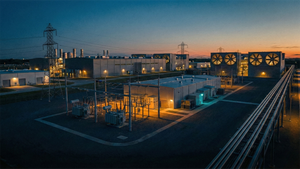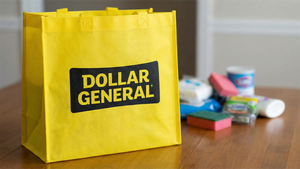Hydropower’s Hidden Weakness: Kryton Highlights Concrete Degradation Risks in U.S. Energy Infrastructure
Waterproofing admixtures can provide 100-year durability, protect against maintenance shutdowns, concrete failure, and energy loss in aging facilities
VANCOUVER, BC July 22, 2025 – 8:00 Pacific Daylight Time – With the world’s hydroelectric infrastructure in critical need of upgrades, Kryton International, the global leader in concrete waterproofing and durability solutions, is calling attention to vulnerabilities in U.S. as the nation rolls out investments to fortify the long-term integrity of its primary clean energy source.
Hydroelectric plants depend heavily on concrete structures — from intake tunnels and spillways to turbine housing and dam walls. But when this concrete begins to crack, leak, or erode, the impact can be severe, resulting in unplanned outages, high maintenance costs, lost power generation, and, in some cases, risk to public safety.
“Concrete is the backbone of hydroelectric infrastructure, yet it’s constantly under attack by water pressure, abrasion, and chemical exposure,” said Kari Yuers, President & CEO of Kryton International. “Without proactive solutions like integral waterproofing, abrasion-resistant admixtures, and (Federal Energy Regulatory Commission) FERC-ready concrete, many facilities are at risk of premature failure and avoidable downtime.”
While hydropower accounts for nearly 27% of renewable electricity generation and 93% of all utility-scale storage in the U.S., many facilities need to be upgraded. The American Society of Civil Engineers gave dams a grade of D in its latest report card, and $3.5 billion in new federal funding to modernize this infrastructure targets dams with an average age of 79 years old, according to the U.S. Department of Energy. For a project to qualify, it must meet one of three criteria, including replacing concrete to prevent water seepage through the dam and erosion repairs.
But all concrete admixture solutions are not the same. Kryton’s Krystol Internal Membrane™ (KIM®) and Hard-Cem® admixtures are uniquely designed to address these challenges, transforming standard concrete into self-sealing, waterproof, and abrasion-resistant material capable of withstanding decades of hydraulic wear.
“Traditional coatings and membranes often deteriorate over time, especially in high-moisture, high-pressure environments like dam galleries and penstocks,” Yuers said. “Our integral admixtures embed protection directly into the concrete matrix, offering a far more resilient and long-lasting solution that extends, both, the operational capacity of hydroelectric infrastructure and financial ROI.”
100-year Durability Concrete Solution for Hydropower
The use of traditional concrete in aging American dams poses a costly conundrum. Unplanned maintenance shutdowns at a hydro facility can cost hundreds of thousands of dollars per day in lost generation. For utilities that rely on waterflow-dependent income, even minor concrete leaks can force emergency repairs, divert crews, or restrict operations.
This issue is not contained to the U.S. most of the world’s nearly 59,000 big dams — constructed between 1930 and 1970 — were designed to last 50 to 100 years, according to research from the U.N. University’s Institute for Water, Environment and Health. According to the International Energy Association, by 2030, more than 20 percent of the global generating units are expected to be more than 55 years old, the age at which major electromechanical equipment will need to be replaced.
Some of the threats to hydroelectric infrastructure include:
- Water Pressure & Chemical Attack: Constant water exposure leads to microcracking, sulfate attack, and leaching — all of which compromise structural integrity.
- High Cost of Downtime: Lost generation revenue, regulatory fines, and emergency repair costs can quickly add up when outages occur.
- Maintenance Burden: Without durable concrete, operators face recurring patching, coating reapplications, and shutdowns that affect long-term efficiency and safety.
- Climate Risks: More frequent extreme weather events are increasing hydroelectric stress loads, accelerating the need for resilient infrastructure.
Kryton admixtures have been deployed in critical water infrastructure projects worldwide, helping facility owners meet EPA and FERC regulations while extending service life and reducing lifecycle costs. As the U.S. ramps up its renewable energy infrastructure, investing in high-performance concrete is essential.
“Whether it’s a new hydro station or a 50-year-old dam getting retrofitted, the concrete must endure constant exposure to high-pressure water and harsh environments,” said Yuers. “The margin for failure is small, but the opportunity for long-term performance is great — with the right materials.”
Key Advantages of Kryton’s Concrete Solutions for Hydroelectric Infrastructure:
- Moisture Protection: Integral waterproofing eliminates pathways for seepage, helping prevent rebar corrosion and internal deterioration.
- Abrasion & Erosion Resistance: Hard-Cem® enhances concrete durability in areas with high flow velocity or sediment abrasion.
- Operational Reliability: Minimizes unscheduled repairs and shutdowns, ensuring consistent power generation.
- Lifecycle Cost Savings: Reduces maintenance, extends service life, and cuts the need for external membranes or surface coatings.
For utilities, engineers, and infrastructure owners seeking to maximize the return on investment in hydro upgrades, Kryton’s proven admixtures provide a durable and scalable solution for concrete infrastructure — safeguarding both performance and public trust.
For more information, visit www.kryton.com or join its upcoming webinar, Water, Wear & Shutdowns: The Triple Threat to Your Concrete, to learn about avoiding a costly shutdown.
ABOUT KRYTON
Kryton International Inc. is the inventor of the crystalline waterproofing admixture and has been waterproofing concrete structures with its proprietary Krystol® technology since 1973. Kryton has won awards for innovation, manufacturing, best place to work, and entrepreneurship. Kryton is an active member of the American Concrete Institute, International Concrete Repair Institute, American Shotcrete Association, and many other thought-leading organizations. Kryton exports its Smart Concrete products to more than 50 countries globally. www.kryton.com
MEDIA CONTACTS
Andrew King, aking@hoytorg.com,
914-513-6895
Leeza Hoyt, llhoyt@hoytorg.com,
310-962-0101
More News
View More




Recent Quotes
View MoreQuotes delayed at least 20 minutes.
By accessing this page, you agree to the Privacy Policy and Terms Of Service.